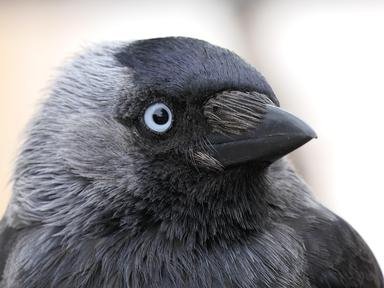Quiz Answer Key and Fun Facts
1. 'Cygnus columbianus' is a winter visitor to Great Britain, where it is sometimes called 'Bewick's'. You'll find them in grasslands and marshlands, usually near the coast, or see them flying in 'V' formations. Which type of bird is this?
2. 'Anser fabalis' is another winter visitor, most often seen on the east coast, in Norfolk and Scotland. They can often be spotted in small groups within larger flocks of similar species. What type of bird is this?
3. 'Tadorna tadorna' is a common sight year-round near Great Britain's coastlines. Most often be spotted on salt marshes and estuaries, it is known to breed here and migrate from further north. What type of bird is this?
4. 'Anas penelope' is a member of the sub-family known as 'dabbling ducks'. Common as a winter visitor to Great Britain, it also sometimes breeds in Scotland and northern England. Which bird is this?
5. 'Anas platyrhynchos' is the ancestor of most breeds of domestic duck. Another dabbler, it is widely found in both the Northern and Southern hemispheres. Which bird is this?
6. 'Anas querquedula' breeds in Europe, including Great Britain, and then toddles off to South Africa, India or Australia for its winter break. The spectacularly adorned male make this one well worth spotting. Which bird is this?
7. 'Mergellus albellus' is one of the few birds where the male (pictured) is less colorful than the female. This is a species dating back millions of years to the Pleistocene. Which bird is this?
8. 'Gavia immer' can be identified in flight by their outstretched neck. Their legs are set far back on their bodies, which is ideal for swimming but make them look out of place on land. They can also be easily identified when alighting on water as they skim along on their bellies to slow them down. Which bird is this?
9. 'Ardea cinerea' can be seen breeding in large colonies close to lakes, coastline and other wetland areas. A wading bird, their long neck enables them to stalk prey and strike very quickly. Which bird is this?
10. 'Podiceps cristatus' is a member of a water bird family noted for their elaborate mating display. You can find them nesting in vegetated areas of freshwater lakes throughout Eurasia. Which bird is this?
Source: Author
EnglishJedi
This quiz was reviewed by FunTrivia editor
Tizzabelle before going online.
Any errors found in FunTrivia content are routinely corrected through our feedback system.

